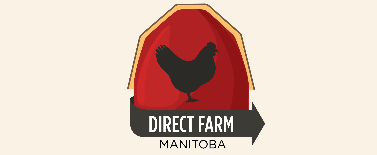Reflecting on Winter – A Response
 Tuesday, September 2, 2014 at 7:55AM
Tuesday, September 2, 2014 at 7:55AM On March 25, Selena posted a column titled “Reflecting on Winter.” Darron Rempel, a mechanical engineer who designs systems for buildings, responded to that column in a very helpful way. Here is what he said:
-
Adding insulation beyond the MB building code of R24 walls and R50 ceilings is typically not effective. The benefits from adding thickness are minimal, but are costly. Some research has shown that batt or other "loose" insulation is not as effective as it could be because of how it's installed. Too many contractors are more interested in getting the job done, than in ensuring that it's done right.
-
The biggest factor in building heat loss calculations is almost always the cost of heating infiltrated air
-
Windows at R4 to R6 for triple pane lose a lot of heat during the night. While they heat the space during the day, they are energy drains at night when they radiate significant amounts of heat out of the house. A low-e coating on the window reduces this heat loss.
-
"Solar windows" are great in this climate for capturing and retaining radiant heat in winter, but consider that these windows will maximize radiant heat gain in summer. The only way to prevent radiant heat gain in summer will be to have low-e (reflective) curtains (available at Target) or have external shutters, such as Rolladencasten. These are common in Germany but are available here if you search hard enough Without these, you'll have a massive cooling energy bill.
-
A wood stove is good – however consider where the combustion air comes from! For every cfm of air removed from the house by combustion, another has to find its way in. If it's uncontrolled infiltration, the cold air coming into the house, even at the other end of the house or the other floor, will feel cold. Reducing infiltration leads to incomplete combustion (smoke and carbon monoxide). Consider an external air intake for the wood stove.
-
Radiant heat from radiant panels will more effectively contribute to comfort than heating air. 50% of what we sense as thermal comfort is based on the surrounding radiant temperatures. If you want a room to give a 21C feel when the walls are 17C, the air temperature will need to be 24-25C. Consider that typically, people set their thermostats at 24C in winter and 21C in summer. Why the difference? It is because of wall temperature. In summer the wall temperature will be 25-26C, so the air temperature must be suppressed to get the proper thermal comfort. In places like Texas, radiant barriers are used to prevent the radiant heat from driving up the wall temperatures. Radient panels can be decorative and hung on the wall. This is common in Europe.
-
A thermal image of your house and a blower door test are far better at telling you how to improve your house's thermal efficiency than guessing at it. In the engineering field I've found that there is no difference between guessing and "common sense". If someone says adding 6 inches of insulation on the house will solve your problems because its common sense - I roll my eyes and know they don't know what they're talking about.
-
There's much more technology out there, but most homeowners just don't know about it, so they use the same old, obsolete methods in their search for the cheapest way to provide temperature control in their houses. And usually it's because they relied on their "common sense".




Reader Comments